|
The Cultural Significance of Snuff Bottles |
|
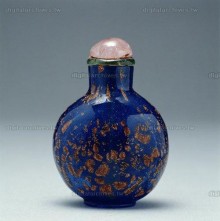 Snuff bottles were used by the Chinese to contain powdered tobacco. They can be traced back to the end of the Ming Dynasty and the beginning of the Qing Dynasty, when legates from Europe presented gifts to the Chinese court. After the introduction of snuff bottles into China, the Manchu people in Beijing, who placed a high premium on leisure and entertainment, made snuff-taking immensely popular, both for the court and the common people. Absorbing distinctively Asian elements, snuff bottles soon became fashionable in China. As the progeny of a consummate combination of innovative Western invention and ingenious Chinese craftsmanship, snuff bottles were, and still are, ...
Snuff bottles were used by the Chinese to contain powdered tobacco. They can be traced back to the end of the Ming Dynasty and the beginning of the Qing Dynasty, when legates from Europe presented gifts to the Chinese court. After the introduction of snuff bottles into China, the Manchu people in Beijing, who placed a high premium on leisure and entertainment, made snuff-taking immensely popular, both for the court and the common people. Absorbing distinctively Asian elements, snuff bottles soon became fashionable in China. As the progeny of a consummate combination of innovative Western invention and ingenious Chinese craftsmanship, snuff bottles were, and still are, ...
|
|
Read more...
|
|
Women in Paintings - Past and Present |
|
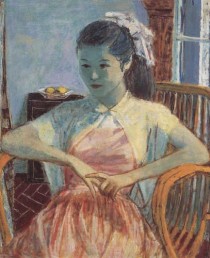 Whether in the East or the West, the past or the present, human figure has been an enduring theme in painting. However, there are great differences between the East and the West. Painters in the East often portray human figures in activities or special scenes. Viewers can read additional information other than the human figures from their paintings. An example of such is the “Night Feast of Han Xizai” by Tang Yin in Ming Dynasty. In contrast, painters in the West typically focus on the details of human body, such as skin color and muscles. Now, let us zero in on the women in paintings and see the differences between portraitures now and those in the past. .....
Whether in the East or the West, the past or the present, human figure has been an enduring theme in painting. However, there are great differences between the East and the West. Painters in the East often portray human figures in activities or special scenes. Viewers can read additional information other than the human figures from their paintings. An example of such is the “Night Feast of Han Xizai” by Tang Yin in Ming Dynasty. In contrast, painters in the West typically focus on the details of human body, such as skin color and muscles. Now, let us zero in on the women in paintings and see the differences between portraitures now and those in the past. .....
|
|
Read more...
|
|
Tamkang University Maritime Museum |
|
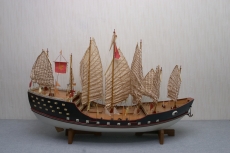 The Tamkang University Maritime Museum is located in the beautiful campus of Tamkang University and is housed in a building fashioned like a ship. Previously the Maritime Museum was named the “Merchant Ship Hall”; Mr. Y.F. Chang, President of the Evergreen Group, donated money for its construction. It was the cradle of Tamkang University's efforts to educate maritime and turbine specialists. In 1985, the Ministry of Education decided to suspend future recruitment of students, after the last class of students graduated in 1989, and after undergoing renovation, the Maritime Museum, the first of its kind in Taiwan, was established in 1990. .....
The Tamkang University Maritime Museum is located in the beautiful campus of Tamkang University and is housed in a building fashioned like a ship. Previously the Maritime Museum was named the “Merchant Ship Hall”; Mr. Y.F. Chang, President of the Evergreen Group, donated money for its construction. It was the cradle of Tamkang University's efforts to educate maritime and turbine specialists. In 1985, the Ministry of Education decided to suspend future recruitment of students, after the last class of students graduated in 1989, and after undergoing renovation, the Maritime Museum, the first of its kind in Taiwan, was established in 1990. .....
|
|
Read more...
|
|
Compassion and Wisdom- Religious Sculptural Arts |
|
Tags: art | Buddhism | sculpture
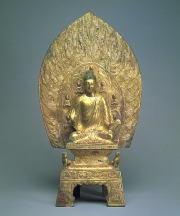 Buddhist sculptures arose out of the belief system that produced them. They are derived from the iconography in Buddhist sutras. Buttressed by the popular religious concepts of the time, they aptly convey the spiritual content in which the religion is rooted. Believers thought that the production of these sculptures would bring about good fortune; practitioners meditated with these images in order to bring about a deeper understanding and wisdom. Religious sermons made use of such profound sculptures to align and intensify the believers' conception of the Buddhist realm. ...
Buddhist sculptures arose out of the belief system that produced them. They are derived from the iconography in Buddhist sutras. Buttressed by the popular religious concepts of the time, they aptly convey the spiritual content in which the religion is rooted. Believers thought that the production of these sculptures would bring about good fortune; practitioners meditated with these images in order to bring about a deeper understanding and wisdom. Religious sermons made use of such profound sculptures to align and intensify the believers' conception of the Buddhist realm. ...
|
|
Read more...
|
|
Enduring Splendor- A Special Exhibition of Mr. Peng Kau-dong’s Bequest |
|
Tags: art | Buddhism | exhibition | Peng Kai-dong
 Born in Hsin-chu, Taiwan, in 1912, he played snooker actively in his early years before moving to Japan to make a living at the age of 15. He then traveled between Taiwan and Japan frequently before he eventually settled down in Japan. Although he did not have a distinguished education, his tenacity, determination to succeed, original vision, and excellent social networking made him one of the most successful businessmen in Japan. Eventually amassing a vast business syndicate, it covered a wide range of industries such as retailing, jewellery, restaurants, galleries and property management. ...
Born in Hsin-chu, Taiwan, in 1912, he played snooker actively in his early years before moving to Japan to make a living at the age of 15. He then traveled between Taiwan and Japan frequently before he eventually settled down in Japan. Although he did not have a distinguished education, his tenacity, determination to succeed, original vision, and excellent social networking made him one of the most successful businessmen in Japan. Eventually amassing a vast business syndicate, it covered a wide range of industries such as retailing, jewellery, restaurants, galleries and property management. ...
|
|
Read more...
|
|
|
Chen Chi-kwan, The Mind’s Eye- Commemorating the 90th Anniversary of His Birth |
|
Tags: architecture | art | Chen Chi-kwan | painting
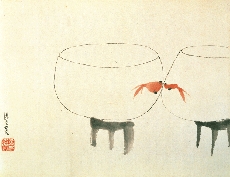 Chen Chi-kwan was born in 1921 in Beijing (known as Beiping at the time). As a child, his father invited a tutor to instruct him and his sister in the Four Books and Five Classics. He also did calligraphy as he learned seal, clerical, regular, running, and cursive scripts to further strengthen his foundation in traditional studies. The War of Resistance against the Japanese erupted when he was a youth, and his whole family ended up moving from place to place, finally settling along with the seat of government in Chongqing, Sichuan Province, where he studied architecture at Central University. ...
Chen Chi-kwan was born in 1921 in Beijing (known as Beiping at the time). As a child, his father invited a tutor to instruct him and his sister in the Four Books and Five Classics. He also did calligraphy as he learned seal, clerical, regular, running, and cursive scripts to further strengthen his foundation in traditional studies. The War of Resistance against the Japanese erupted when he was a youth, and his whole family ended up moving from place to place, finally settling along with the seat of government in Chongqing, Sichuan Province, where he studied architecture at Central University. ...
|
|
Read more...
|
|
|
<< Start < Prev 1 2 3 4 5 6 7 8 9 10 Next > End >>
|
|
Page 9 of 13 |